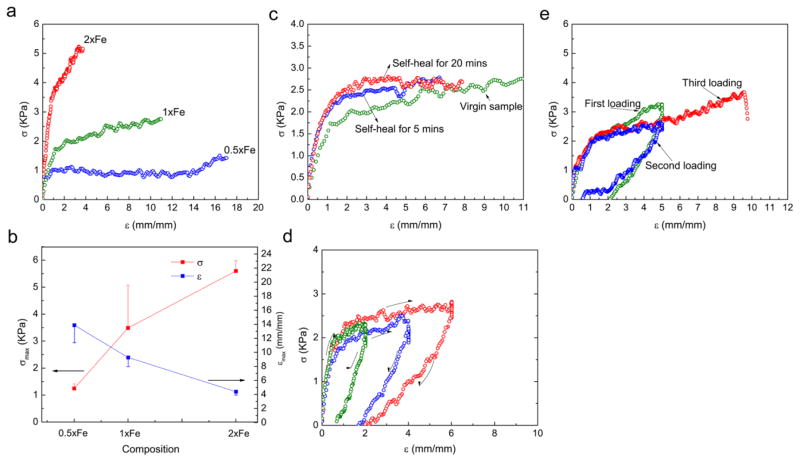Figure 3.
Composition dependent, self-healing and self-recovery properties of the hydrogels. (a) The tensile stress-strain curve of the hydrogel is dependent on the concentration of catechol-Fe3+ complexes. (b) The maximum stress and rupture strain are dependent on the concentration of the complexes. Higher concentration of the complexes results in higher mechanical strength and lower rupture strain. (c) A self-healed sample exhibits similar stress-strain behavior to that of the virgin sample. (d) Different residual strains were observed for different samples that were first stretched to 2, 4 and 6 times their original lengths, but all became negligible (less than 10%) after a short recovering time of 5 minutes. (e) Repeated loading to the same sample revealed the full recovery of the mechanical properties after a 20-minute recovery time. Error bars: SD, n=3.

